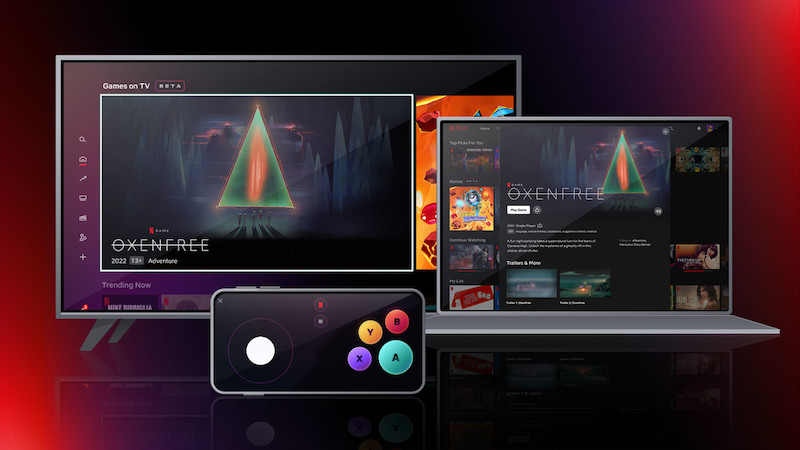Bluetti EB55 – the portable power station for on the go [Anzeige]
Who does not know the saying “Why power station? With us, the electricity comes from the socket? Only if you try to nail a socket to the tree in your garden will you be disappointed if you find out that you can’t connect an electric lawnmower to it. That’s why we’re asking you this Bluetti EB55 before.
There are various scenarios where you sorely miss a power supply:
- When camping, to be able to provide music or light.
- When doing handicrafts, so that you can use the grinder or compressor even when you are away from a socket. Or to recharge the batteries of the cordless tools.
- For installation work at home, when it is necessary to switch off the house electricity, but you still need light and working current.
- On the boat so that you can also charge your laptop or smartphone there.
- In the garden to store the generated solar power and use it later
- On a photo safari, to be able to recharge empty batteries while on the go
- At a picnic or on the beach to be able to supply the cool box with electricity
- As a UPS to ensure continued operation of the connected devices in the event of a power failure or fluctuations
In the Bluetti EB55 It is not only a “portable socket” but also a solar generator. If you also get solar panels, you can also use the device to simply save on electricity costs. The device comes from PowerOak and is the smallest of this product line.
Contents
unboxing
The EB55 was delivered in a sturdy double box, which was provided with the usual warnings regarding the batteries. The double carton only seems to be a shipping protection measure, because the second carton fits “suckily” into the outer carton. In addition to the main device packed in styrofoam, there was a smaller box with the accessories inside.
First impression
According to my bathroom scales, the device weighs 7.4 kg. In my case it is made of blue plastic. The front and side panels are black. The dimensions are 28 x 20 x 20 cm. On the underside is the nameplate, which already reveals the first data. On the back there is a built-in light, which has two brightness levels and the “SOS” flashing signal as a setting option.
At the top, the EB55 also has an integrated QI charging pad that can charge wirelessly with up to 15W. Of course only devices that support the QI charging function.
The accessories
In the smaller box you will first find the power supply unit, which with an output voltage of 25.2V and a maximum charging current of 8A should have an output of just over 200 watts (201.6W). That also explains the somewhat clumsy scope.
The power supply also includes the mains connection cable with a small device plug (IEC-60320 C7/C8) on one side and the Euro flat plug on the other side (not shown, as it is commonly known). The charging cable with a 7.9mm barrel connector is located on the output side of the power pack.
A charging cable for the
Cigarette lighter (more precisely: “on-board voltage plug 12V”) included. An XT90 connector is mounted on the second end. These are also known as “high-current gold contact plugs” from model making.
The third charging variant can be implemented with a solar charging cable. In photovoltaics, the MC4 connectors have established themselves as the connection standard. BUT ATTENTION! The polarity varies from manufacturer to manufacturer! Only measuring helps here! This cable also has an XT90 connector at the other end.
As additional accessories, there is a leaflet as an operating manual and a guarantee card in the box.
Regarding the operating instructions, it should be said that these can only serve as quick instructions and are written in English. Some functional descriptions are missing here. However, an inquiry at Bluetti revealed that more extensive instructions in German are in the works.
The case front
The front is divided into 5 areas:
- The charging ports (inputs)
- DC outputs for small devices (USB)
- DC outputs for heavier consumers
- AC outputs 230V (SchuKo – protective contact sockets)
- The screen
The device has 3 on/off switches, depending on which output is required. A pushbutton is positioned at outputs 2, 3 and 4, which, with a long press (min. 2 seconds), switches on the corresponding area (and of course the entire device).
ATTENTION: In combination, i.e. when two of the buttons are pressed at the same time, further functions are switched on. The button in field 3 is also used to switch on the display. However, it only has to be pressed briefly. If you press here too long, you switch the device off completely!
The charging ports
Two charging ports are hidden behind the rubber splash guard. On the one hand by means of an XT90 connector, on the other hand via a 7.9mm barrel connector. Both inputs tolerate voltages up to 28V.
The XT90 connection can work with a maximum charging current of 8A, the barrel connector can handle charging currents of up to 10A.
Here you should use the enclosed cables. If you make your own cables, you should definitely pay attention to the correct polarity. Here you can use the enclosed cables as a template.
The outputs
The small device output offers a total of 5 connection options. 4 times a USB-A output with a maximum of 15 watts. This value is default.
But the USB-C output is interesting. Since higher voltages than 5 V (5-20V) can also be applied with this standard, up to 100W output power can actually be provided here. However, the actual performance depends on the connected device and the cables used.
In the connection area (3) there are two 5.5 x 2.1mm barrel connectors and an on-board voltage socket (also known as a cigarette lighter) as connection options.
All 3 connections together can supply a current of up to 10A. In the event of an overload, the device switches off.
The two Schuko sockets provide a maximum of 700W of power at 230V. Clear limits compared to a house connection must be observed here! While most household sockets are protected with 16 A, the EB55 already has a fuse of around 3A.
Before connecting the 230V devices, you should definitely calculate the maximum power. The required individual services can usually be found on the type plate of the devices.
the display
The display is colored and basically shows the input and output power, as well as the battery charge status and the mains frequency. The display goes out automatically after a while and can go through short be activated again by pressing the on/off switch to the right.
The first load
First store
After I connected the power supply, the EB55 started charging automatically. Here is a plus and a minus point:
plus point: The EB55 automatically recognizes when charging voltage is present and starts charging independently. This is especially interesting if I would charge with the solar panels. I know from test reports of other devices from the competition that this is by no means standard. So you don’t have to switch the device to the charging state at sunrise.
minus point: The power supply is just too loud. This is due to the built-in fan, which also starts to cool in a completely pointless manner when no heat can have developed at all. Apparently, there is no thermal control here and the “fan” is simply always running. That needs to be improved. Especially when I want to charge the EB55 at night and try to sleep near it. That doesn’t work at all.
After about 3.5 hours, a completely empty power station should be fully charged again with the power pack. Since it was already about 60% charged when it was delivered, the first charge only took me about 1 hour. When the charging process is finished, the EB55 switches itself off, but unfortunately the annoying power pack does not!
Installation
There is no actual main switch for everything. That also makes sense, because why should the inverter work (which is responsible for generating the 230V AC voltage) when I only need DC voltage. To switch the required outputs on and off, I hold down the respective button for about 2 seconds. A small green LED indicates readiness. This LED could have been more generously dimensioned. In sunlight it will be difficult to see them. The display also turns on for a while.
A question immediately arises here: What does ECO mean and how do you switch it on and off?
Setup mode – ECO function and frequency
A query to PowerOak revealed: “If the ECO function is activated, the direct and alternating voltage outputs (AC/DC) switch off if the output load is too low for more than 4 hours (<10W for AC voltage or <1W for DC voltage). to protect the battery from unintentional discharge (e.g. leakage currents). Unfortunately, this information is not found in the operating instructions. But this should be improved.
The function can be set in setup mode. This mode can be activated or deactivated by simultaneously pressing the two lower on/off switches. Now you can switch the ECO mode on and off with the DC button. By tapping the AC button (right), the AC frequency can be switched between 50Hz and 60Hz. The setup mode is exited again by holding both buttons down at the same time.
The technical data
PowerOak guarantees the following:
- Battery capacity: 537Wh
- Battery cell type: LiFePO4 (2500+ life cycles)
Outputs:
- 2x AC outputs (220-240V, 700W (1400W peak), 50Hz/60Hz, pure sine wave)
- 1x USB Type-C (100Wmax(5V/3A,9V/3A,12V/3A,15V/3A,20V/3A,20V/5A)
- 1 x cigarette lighter (12V/10A)
- 4x USB A (5V/3A)
- 2 x 5.5mm barrel connector (12V/10A)
- 1*QI charging pad (15W Max)
Inputs:
- XT90 12V (28V / 8A max.)
- 7.9mm barrel connector (12V – 28V /10A / 200W Max / 7.9mm x 0.9mm)
- LED lighting (Full Bright / Half Bright / SOS Flash Mode)
- Simultaneous charging with 2 systems possible (Dual Charge / Multi Fast Charge)
The power station can be charged simultaneously with 2 chargers via a wall socket, via charger and solar panel or via charger and cigarette lighter. This significantly shortens the charging time and does not damage the battery.
Loading time:
- 230 V mains charger (approx. 3 hours)
- Solar module 200W (approx. 3-4 hours)
- Cigarette lighter (approx. 6 hours at 12V (car) | approx. 3.2 hours at 24V (truck, caravan))
Without going into detail about each connected device, I can say that every device worked perfectly, from the music system to the hair dryer to the coffee machine. A small 55 inch TV and an electric cool bag also worked as expected. However, since I did not operate every device to the point of absolute discharge, I resorted to the manufacturer’s information for the following data:
Possible operating times:
- Smartphone charger (approx. 50 hours (at 10Wh))
- LED lighting (approx. 30 hours (at 20W))
- TV (approx. 6 hours (at 75W))
- Power tool (approx. 5 hours (at 80W))
- Fridge (approx. 5 hours (at 90W))
price and availability
The Bluetti EB55 directly on the Manufacturer’s website offered. Here you can purchase the PowerOak station at a price of 649 euros. The Bluetti EB55 is available in the colors blue (see our test) or optionally gray. You can even pay for the EB55 here using both Google Pay and Apple Pay.
My conclusion
Personally, I will probably use it more often in the garden, since I don’t always have accessible sockets there. I will either connect my devices directly or the chargers for cordless tools. I’m also thinking about buying a solar panel.
Positive:
- network independence
- QI charging pad
- Small dimensions/weight
- Charging option via mains, solar or socket
- clear
- Support (in my case via Facebook) with a timely response
Negative:
- Loud power supply
- No 4mm laboratory plug connection
- Small operating LED
- Insufficient manual (will be turned off)
As for the price, let everyone decide for themselves.
![Bluetti EB55 – the portable power station for on the go [Anzeige] Bluetti EB55 – the portable power station for on the go [Anzeige]](https://www.basicthinking.de/blog/wp-content/uploads/2023/06/pf-88dff111-bluettieb55charginginhome-min_750x.jpg)


